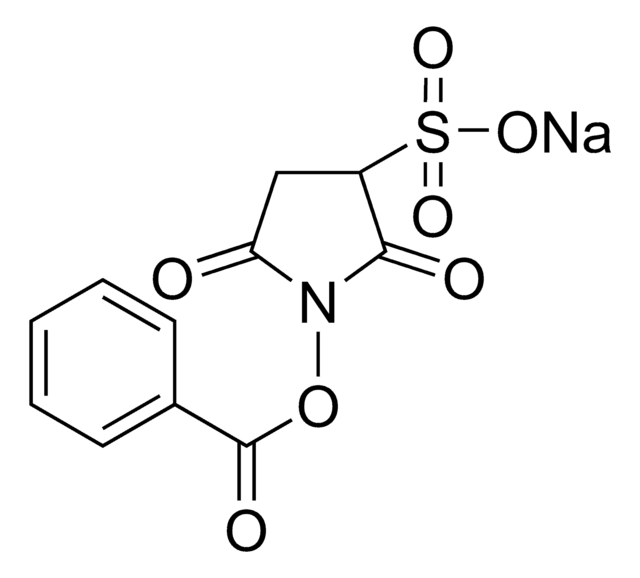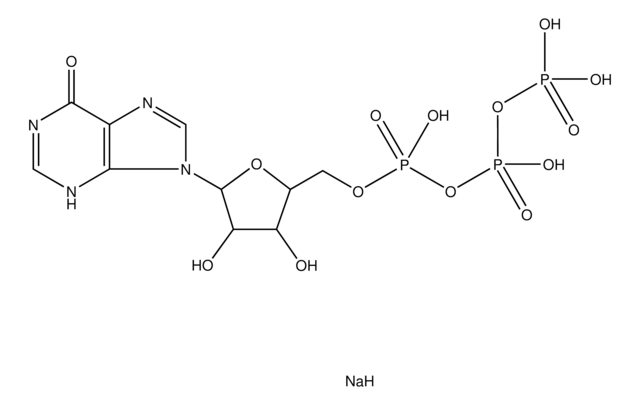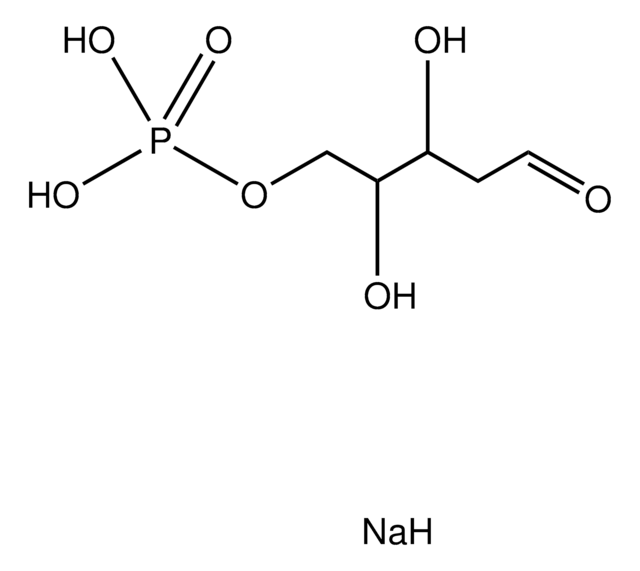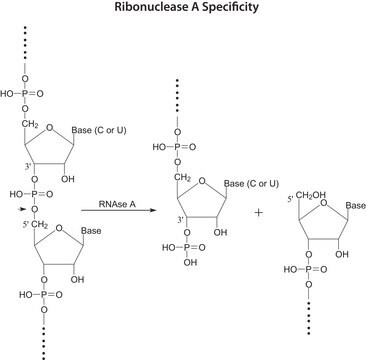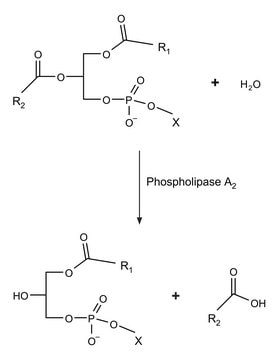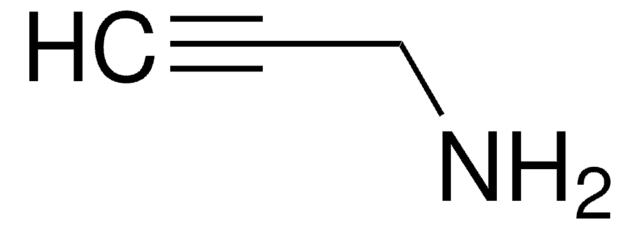808490
N6-Propargyl-ATP sodium salt
Sinónimos:
(N6pATP) sodium salt, N6-Propargyl-adenosine-5’-triphosphate sodium salt
About This Item
Productos recomendados
Análisis
≥95% (HPLC)
Nivel de calidad
formulario
solid
idoneidad de la reacción
reaction type: click chemistry
solubilidad
10 mM Tris-HCl, pH 7.5: soluble
Condiciones de envío
wet ice
temp. de almacenamiento
−20°C
cadena SMILES
O[C@@H]([C@H]1O)[C@@H](COP(O)(OP(O)(OP(O)(O)=O)=O)=O)O[C@@H]1N2C=NC3=C2N=CN=C3NCC#C
InChI
1S/C13H18N5O13P3/c1-2-3-14-11-8-12(16-5-15-11)18(6-17-8)13-10(20)9(19)7(29-13)4-28-33(24,25)31-34(26,27)30-32(21,22)23/h1,5-7,9-10,13,19-20H,3-4H2,(H,24,25)(H,26,27)(H,14,15,16)(H2,21,22,23)/t7-,9-,10-,13?/m1/s1
Clave InChI
MUOIWXPACQCYQC-RJNFYWFKSA-N
Categorías relacionadas
Aplicación
Código de clase de almacenamiento
11 - Combustible Solids
Clase de riesgo para el agua (WGK)
WGK 3
Punto de inflamabilidad (°F)
Not applicable
Punto de inflamabilidad (°C)
Not applicable
Elija entre una de las versiones más recientes:
¿Ya tiene este producto?
Encuentre la documentación para los productos que ha comprado recientemente en la Biblioteca de documentos.
Los clientes también vieron
Nuestro equipo de científicos tiene experiencia en todas las áreas de investigación: Ciencias de la vida, Ciencia de los materiales, Síntesis química, Cromatografía, Analítica y muchas otras.
Póngase en contacto con el Servicio técnico
![γ-[(Propargyl)-imido]-ATP sodium salt](/deepweb/assets/sigmaaldrich/product/structures/394/730/00e7a2cd-6683-4939-9d87-4c35480b1186/640/00e7a2cd-6683-4939-9d87-4c35480b1186.png)

